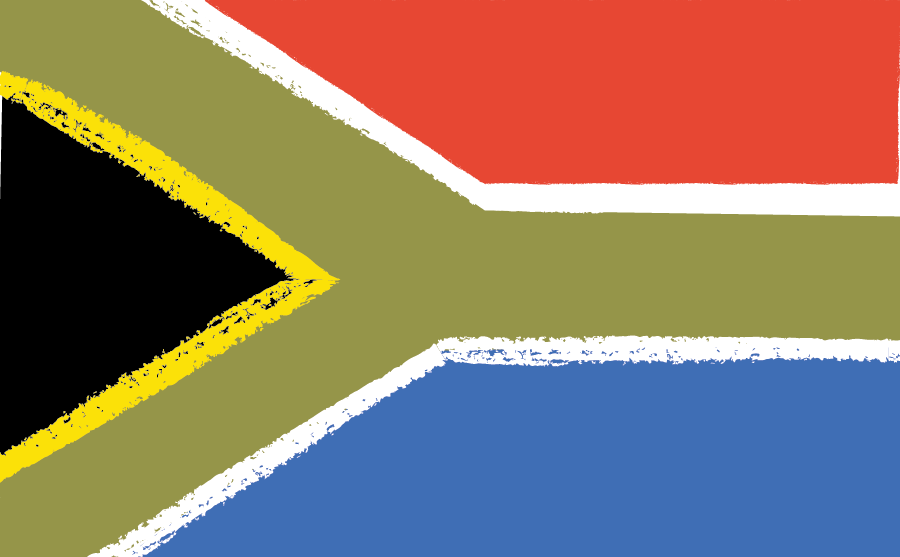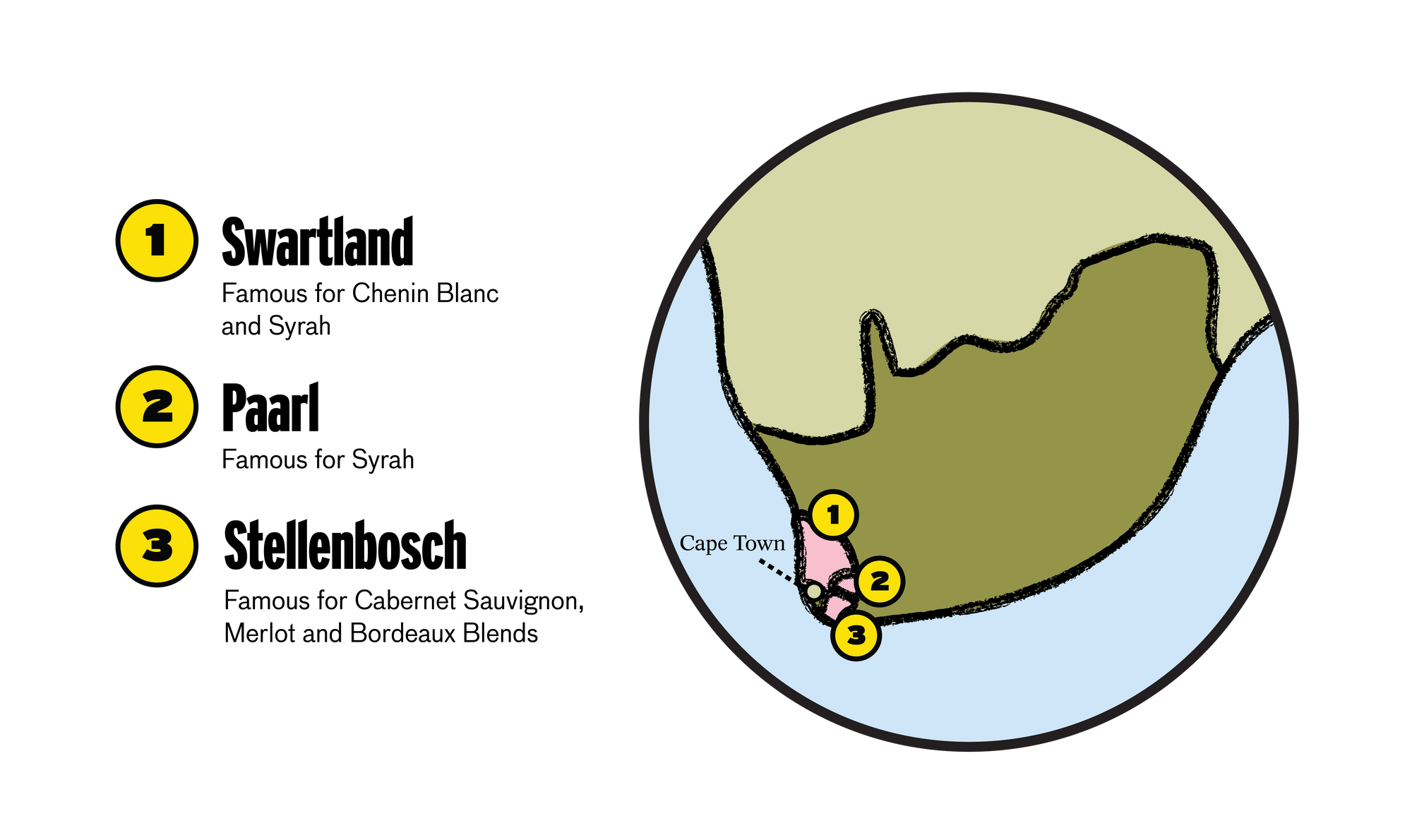

The only big wine player on the African continent, and with plenty to say.
History--red
Heard of the Dutch East India Company? They basically invented global trade. A merchant fleet of ships would travel the globe, trading goods from country to country, and bringing exotic riches back to Holland, Spain and other big European powers in the 1600s.

They established a merchant outpost in South Africa around 1650, and grapes were one of the first crops to be planted, using cuttings from France and Spain. In the 1700s, a famous estate by the name of Constantia was producing the most famous dessert wines in the world! Drunk across Europe by royalty and politicians, Klein Constantia was revered as one of the world’s great wines.
Fast forward to the early 1900s, and the grape/wine industry was in trouble, and only a collaboration of farmers and winemakers saved the South African wine business.
The now-famous Pinotage was developed in 1925, but not bottled until 1959 – a clear example of the troubles they were experiencing. Distillation and the production of brandy was king at this time. Apartheid gripped the country, lives were broken and industry halted.
It wasn’t until 1990 (the year Nelson Mandela was released from prison!) that wine exports took off again, with many international trade bans lifted with the abolition of apartheid. Winemakers looked to the future with fresh eyes and quality again became a goal for growers and makers alike. Pinot Noir, Chardonnay, Syrah and Sauvignon Blanc all were planted in earnest. Chenin Blanc became a hit again. Sparkling wines were given the credit they deserved.
By the early 2000s, various regional and varietal associations were championing their patch of dirt and their varieties. The world started to wake up to the old vines and fresh vision of these winemakers. In many ways like Australia, the quality of these old vines and a movement towards more balanced wines (with less oak and alcohol), led the way for a new wine industry.
Top regions--aromatic
Swartland - a region that has only risen to prominence since the early 2000s, this is a dry, arid region on the western coast of South Africa. Plenty of Syrah, Chenin Blanc and Grenache found here.
Paarl - one of the two most famous wine regions in the country, Paarl is just inland from Cape Town and is home to plenty of large scale wineries growing Chardonnay, Cabernet, Shiraz and Pinotage.
Stellenbosch - probably the best known region in the country, Stellenbosch could be considered the Napa Valley of South Africa. Plenty of Cabernet and Chardonnay here, and some of the best known wineries. **

Top grapes--racy
Pinotage - a crossing of Pinot Noir and Cinsault, which is very popular in South Africa and was previously known as Hermitage. So Pinot-age. Developed in 1925 by a professor of viticulture in Stellenbosch. Sometimes shows off a gritty, rubbery character, but can be wonderfully perfumed with raspberry and cocoa.
Chenin Blanc (known locally as steen) - planted in just about every region of South Africa, it finds its best expressions in Swartland and Stellenbosch. Fresh, tangy and succulent, it has a wonderful balance of fruit and acidity.
Specific wine styles--strawberry
Steen - old vine, fresh Chenin Blanc is probably South Africa's greatest contribution to the world of wine. Not as steely as French examples, and not as tropical fruity as Australian examples, it walks a line in between, with some green notes and a wonderful sense of soil expression.
Method Cap Classique - the name for traditionally made sparkling wines from South Africa. Essentially the same as traditional method wines made in Australia, but the South Africans have codified the production process and instituted rules around the labelling of it, for national marketing purposes.
Do you know your wine personality? If your answer is no, take our quiz to find out which wines to pick up next and build your box!
Build my box





